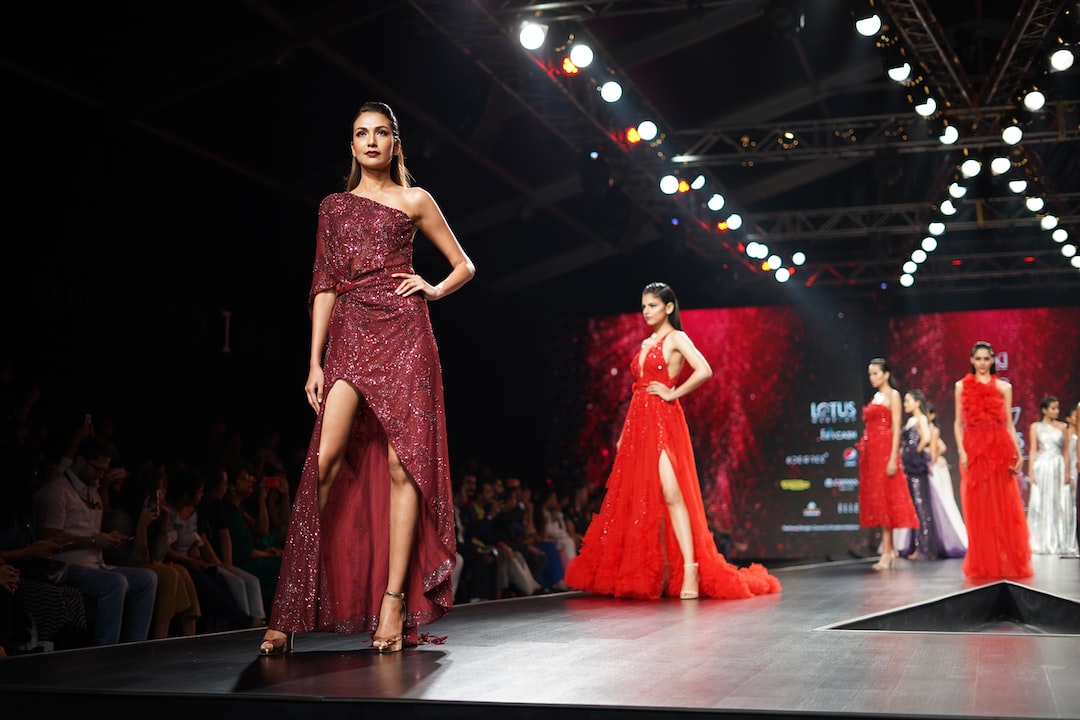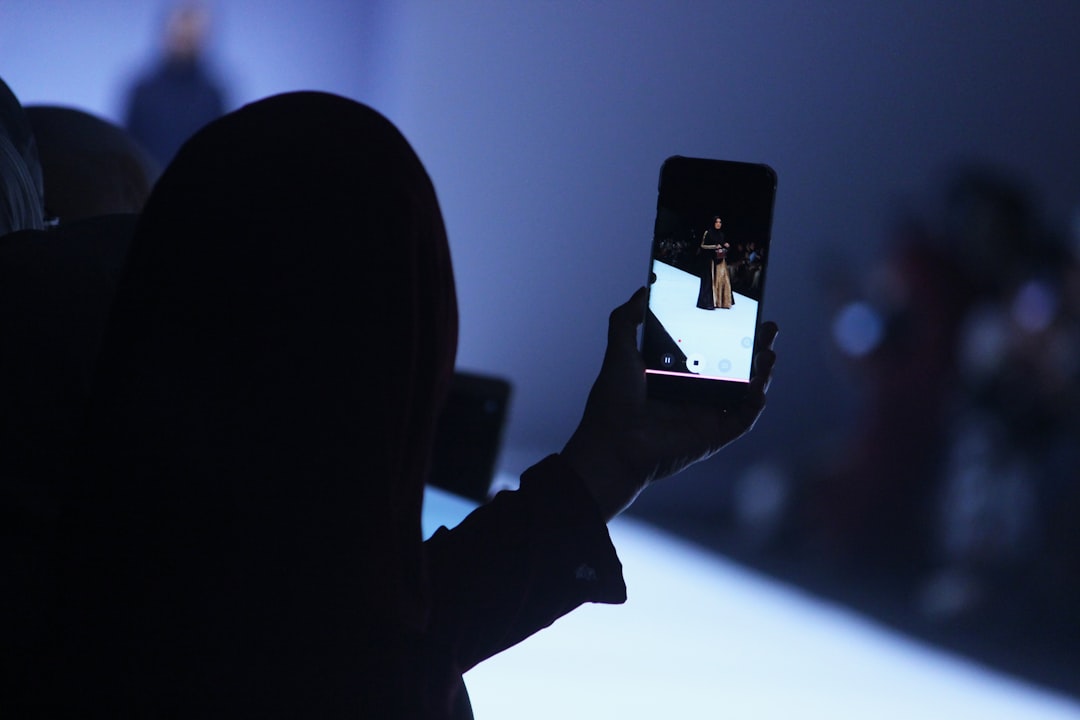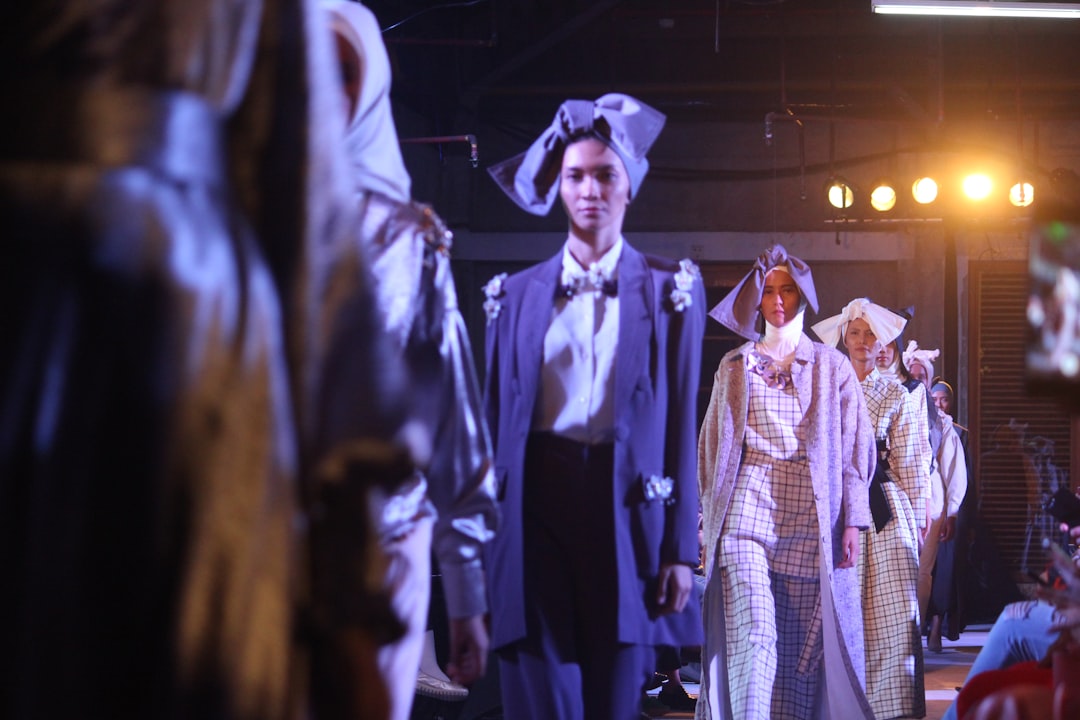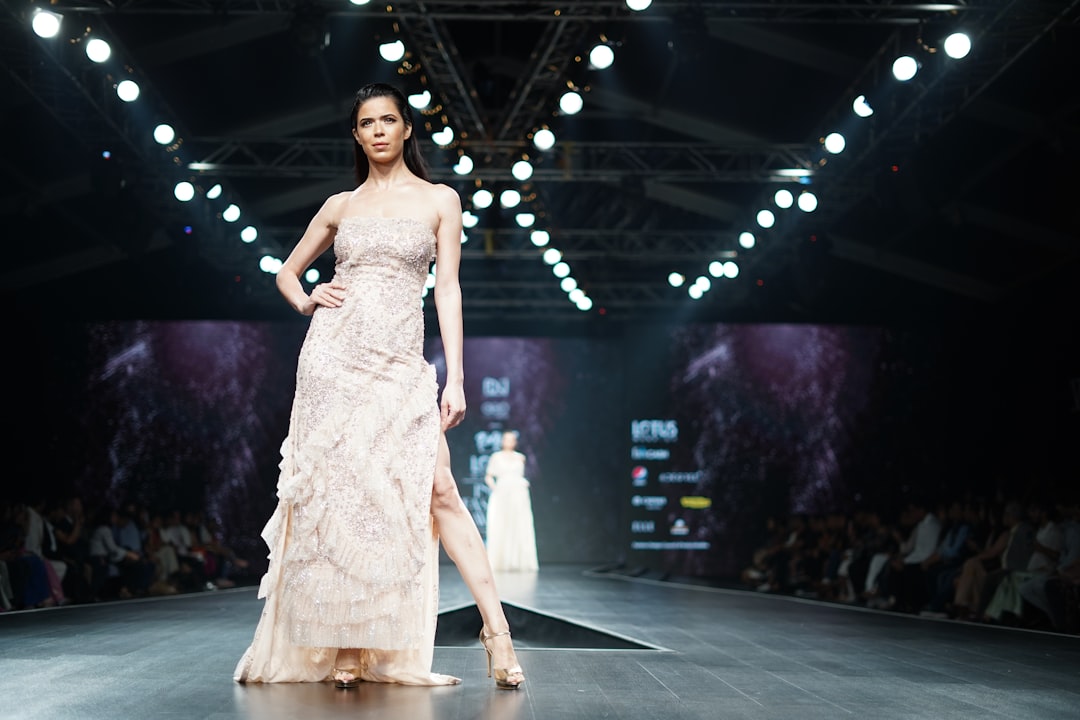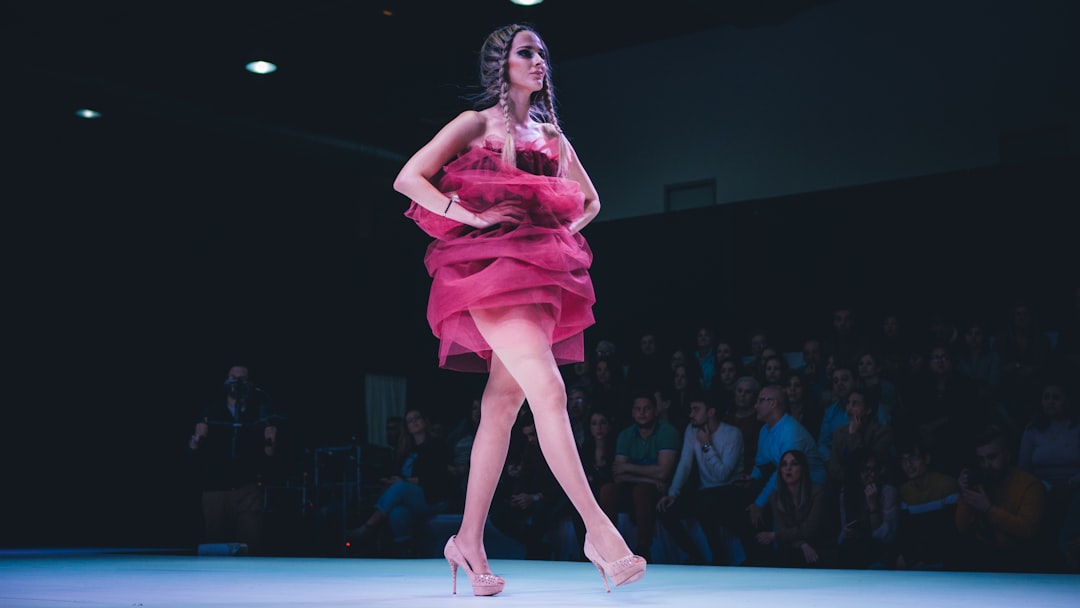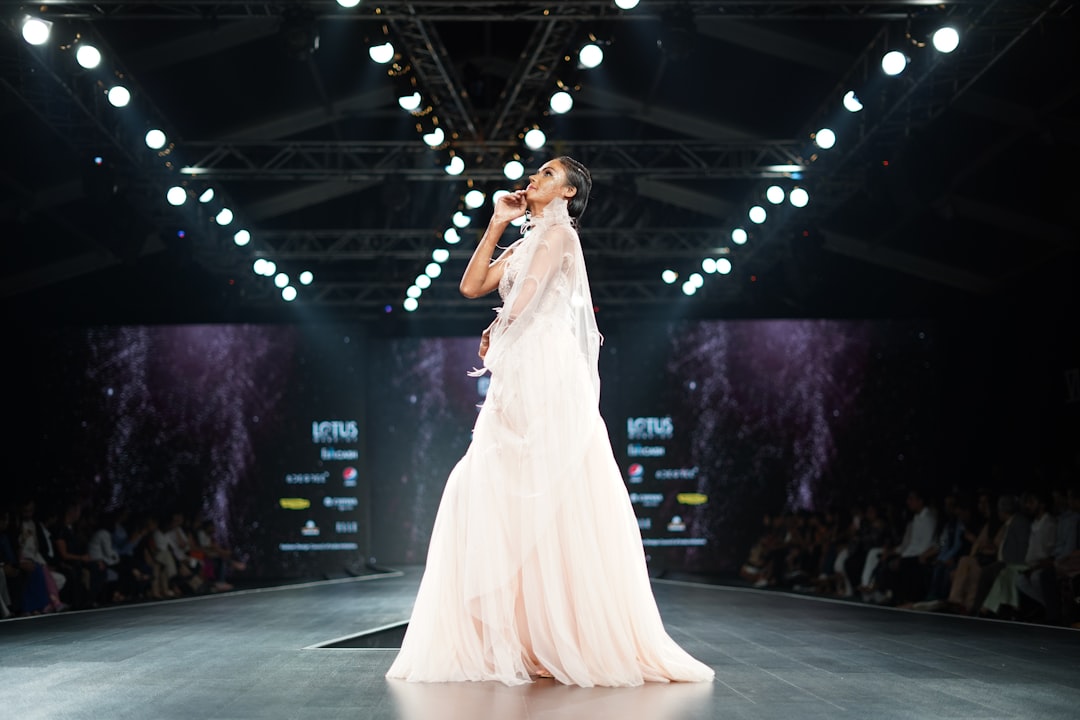The fashion industry is an ever-evolving landscape, constantly influenced by technological advancements and changing consumer preferences. One of the most significant technological advancements that have impacted the fashion industry in recent years is Artificial Intelligence (AI). AI is revolutionizing the fashion industry by enabling designers to create new designs, providing personalized shopping experiences to customers, optimizing supply chains, promoting sustainability, and even allowing customers to try on clothes virtually.
AI has transformed the fashion industry by providing designers with a new tool to assist in the creative process. By using AI-powered tools, designers can generate new designs that would have been impossible to create manually. AI-powered tools can analyze data from various sources, including social media, to identify emerging fashion trends and consumer preferences. AI can also be used to predict future trends, which allows designers to create designs that are ahead of their time.
In addition to assisting designers, AI is also enhancing the shopping experience for customers. AI-powered recommendation engines can analyze customer data, including purchase history and browsing behavior, to provide personalized recommendations. This level of personalization improves customer satisfaction and can lead to increased sales for retailers.
AI is also optimizing the supply chain in the fashion industry. By analyzing data on inventory levels, production times, and shipping times, AI can identify areas where the supply chain can be improved. This optimization leads to increased efficiency, reduced costs, and faster delivery times.
Sustainability is also a significant concern in the fashion industry, and AI is helping to promote eco-friendliness. AI can be used to analyze the environmental impact of fashion production and identify areas where improvements can be made. AI-powered tools can also be used to optimize manufacturing processes, reducing waste and energy consumption.
Finally, AI is allowing customers to try on clothes virtually, enhancing the convenience of the shopping experience. Virtual try-on technology uses AI-powered algorithms to create a virtual representation of the customer that can try on clothes virtually. This technology saves time and increases customer satisfaction by allowing customers to see how clothes will look on them without having to physically try them on.
In conclusion, AI is having a significant impact on the fashion industry, transforming the way designers create new designs, providing personalized shopping experiences to customers, optimizing supply chains, promoting sustainability, and allowing customers to try on clothes virtually. As AI continues to evolve, we can expect even more significant changes in the fashion industry in the future.
Fashion Design: AI-Assisted Creativity
When it comes to fashion design, creativity is essential. However, the creative process can be time-consuming, especially when designers have to come up with new ideas and designs constantly. This is where AI comes in to assist fashion designers with the creative process.
AI-powered tools can analyze data from various sources such as social media, fashion blogs, and trend reports to identify emerging trends and styles. This information can then be used to generate design ideas and inspiration for designers. Additionally, AI can help designers to experiment with different fabrics, colors, and patterns to create unique designs.
One of the most significant advantages of AI-assisted creativity is the ability to speed up the design process. With AI, designers can create and test multiple designs in a short amount of time, reducing the time it takes to bring a product to market. This not only saves time but also reduces the cost of production.
Moreover, AI can help designers to create designs that are tailored to their target audience. By analyzing data on consumer preferences and shopping habits, AI can suggest design elements that are likely to appeal to a specific demographic. This level of personalization can help designers to create products that are more likely to sell, thereby increasing their revenue.
AI-assisted creativity is an exciting development in the fashion industry. By using AI-powered tools, designers can create unique designs, speed up the production process, and tailor their products to their target audience. As AI continues to evolve, we can expect to see more innovative and creative solutions that will revolutionize the fashion industry.
AI-assisted creativity is an exciting development in the fashion industry.
Personalized Shopping Experience: AI-Powered Recommendations
When it comes to shopping for clothes, the experience can be overwhelming. With so many options available, it can be difficult to know where to start. That’s where AI-powered recommendations come in. By analyzing consumer data and behavior patterns, AI can suggest personalized recommendations to each individual shopper.
Imagine walking into a store and having a personal stylist at your fingertips. AI-powered recommendation systems work in a similar way, providing shoppers with a customized experience that takes into account their style preferences, body type, and shopping history. This not only makes the shopping experience more enjoyable, but it also helps consumers make better purchasing decisions.
AI-powered recommendations are not just limited to online shopping. In-store experiences can also benefit from this technology. By using mobile apps or interactive kiosks, shoppers can receive personalized recommendations based on their location within a store.
But how does AI know what to recommend? It all comes down to data. AI algorithms analyze everything from a shopper’s purchase history and browsing behavior to their social media activity and even weather patterns. This data is then used to make predictions about what the consumer is likely to purchase in the future.
Personalized recommendations not only benefit consumers, but they also benefit retailers. By providing shoppers with a tailored experience, retailers can increase customer loyalty and drive sales. In fact, a study by McKinsey & Company found that personalized recommendations can increase sales by up to 30%.
However, there are also concerns about privacy and data security when it comes to AI-powered recommendations. Retailers must take steps to ensure that consumer data is kept secure and that shoppers are aware of how their data is being used.
AI-powered recommendations are revolutionizing the shopping experience. By providing personalized suggestions based on data analysis, retailers can increase sales and improve customer satisfaction. As this technology continues to evolve, it will be interesting to see how it shapes the future of fashion retail.
With so many options available, it can be difficult to know where to start.
Supply Chain Optimization: AI-Enhanced Efficiency
When it comes to the fashion industry, supply chain optimization is a critical aspect that can make or break a brand’s success. Inefficient supply chains can lead to delayed deliveries, increased costs, and reduced customer satisfaction. This is where AI comes in to enhance the efficiency of the supply chain.
AI-powered systems can help fashion brands to better forecast demand, optimize inventory levels, and streamline logistics. For example, AI algorithms can analyze historical sales data, social media trends, and other relevant data points to forecast demand accurately. This can help brands to make more informed decisions about production and inventory management, reducing the risk of overstocking or stockouts.
AI can also help brands to optimize their logistics operations by identifying the most efficient routes for transportation, minimizing shipping times and costs, and reducing the carbon footprint of the supply chain. With AI-powered supply chain optimization, fashion brands can improve their operational efficiency, reduce costs, and enhance their sustainability efforts.
Moreover, AI can help fashion brands to identify and address supply chain issues in real-time. For instance, if there is a delay in the delivery of raw materials, AI can alert the brand’s supply chain team and provide recommendations on how to mitigate the impact of the delay. This can help brands to maintain their production schedules and fulfill customer orders on time.
AI-powered supply chain optimization is a game-changer for the fashion industry. By leveraging AI algorithms, fashion brands can better forecast demand, optimize inventory levels, streamline logistics, and improve their sustainability efforts. This can lead to increased operational efficiency, reduced costs, and enhanced customer satisfaction, ultimately driving the success of the brand.
AI-powered systems can help fashion brands to better forecast demand, optimize inventory levels, and streamline logistics.
Sustainability: AI-driven Eco-Friendliness
As the world becomes increasingly aware of the impact of human activity on the environment, the fashion industry is under pressure to adopt more sustainable practices. In this regard, AI has emerged as a powerful tool that can help fashion brands reduce their carbon footprint and promote eco-friendliness.
One of the key ways in which AI is driving sustainability in the fashion industry is by enabling more efficient use of resources. For example, AI-powered supply chain optimization can help fashion brands reduce waste by predicting demand more accurately and optimizing production processes. By using AI to analyze data on consumer behavior and preferences, fashion brands can also create products that are more likely to be successful, reducing the need for excess inventory and waste.
Another way in which AI is promoting sustainability is by enabling more eco-friendly materials and production methods. AI can be used to identify and develop new materials that are more sustainable, such as fabrics made from recycled materials or biodegradable fibers. AI can also be used to optimize production processes, reducing energy consumption and waste.
Furthermore, AI can help fashion brands reduce their carbon footprint by enabling more sustainable transportation and logistics. By using AI to optimize shipping routes and transportation methods, fashion brands can reduce the amount of energy and resources needed for transportation, while also reducing emissions.
In addition to these practical applications, AI is also driving sustainability in the fashion industry by raising awareness about environmental issues. By analyzing data on consumer behavior and preferences, AI can help fashion brands understand what consumers care about and what types of products they are more likely to buy. This can help fashion brands develop more sustainable products and promote eco-friendliness through marketing and advertising.
Overall, the use of AI in the fashion industry has the potential to be a powerful force for sustainability and eco-friendliness. By enabling more efficient use of resources, promoting more sustainable materials and production methods, and raising awareness about environmental issues, AI is helping to create a more sustainable future for the fashion industry and the planet as a whole.
By using AI to optimize shipping routes and transportation methods, fashion brands can reduce the amount of energy and resources needed for transportation, while also reducing emissions.
Virtual Try-On: AI-Enabled Convenience
The fashion industry has always been a visual and tactile experience, with consumers wanting to try on clothes and see how they look before making a purchase. However, with the rise of online shopping, this experience has become more challenging. Enter virtual try-on technology, which uses AI to enable customers to see how clothes will look on them without ever having to leave their homes.
Virtual try-on technology uses computer vision and machine learning algorithms to create a realistic 3D model of the customer’s body. The technology then overlays the clothes onto the 3D model, allowing the customer to see how the clothes will fit and look on them. This technology not only enhances the shopping experience for customers but also helps reduce the number of returns, which is a significant cost for online retailers.
AI-enabled virtual try-on technology is also beneficial for fashion brands, as it allows them to showcase their products in a more engaging and interactive way. This technology can be used to create virtual fashion shows, where customers can see models walking down the runway wearing the latest designs. It can also be used to create virtual showrooms where customers can browse and try on clothes in a virtual environment.
Virtual try-on technology is still in its early stages, but it is rapidly evolving. As the technology improves, it will become more accurate and realistic, allowing customers to have a more immersive and personalized shopping experience. It will also become more accessible, as the cost of the technology decreases, making it available to smaller retailers.
AI-enabled virtual try-on technology is changing the way we shop for clothes, providing a more convenient and engaging experience for customers and brands alike. As the technology continues to evolve, we can expect to see more innovative and exciting applications of virtual try-on technology in the fashion industry.
However, with the rise of online shopping, this experience has become more challenging.
Conclusion: AI’s Impact on the Future of Fashion
As we have explored in the previous chunks of this blog post, AI is revolutionizing the fashion industry in various ways. From assisting with fashion design to enhancing the shopping experience and optimizing the supply chain, AI is transforming the industry’s operations and making it more efficient and sustainable.
With AI-assisted creativity, designers can explore new horizons and create innovative designs that were previously impossible. AI-powered recommendations are making it easier for shoppers to find the products they need, while supply chain optimization is reducing waste and increasing efficiency.
Moreover, AI-driven sustainability is helping the fashion industry become more eco-friendly and reduce its carbon footprint. Virtual try-on is making it easier for customers to try on clothes and see how they look before making a purchase.
In conclusion, AI’s impact on the future of fashion is significant and promising. The fashion industry is constantly evolving, and AI is playing a massive role in shaping its future. As AI continues to develop and evolve, we can expect to see even more exciting innovations that will change the fashion industry for the better. The future of fashion is bright, and AI is leading the way.
